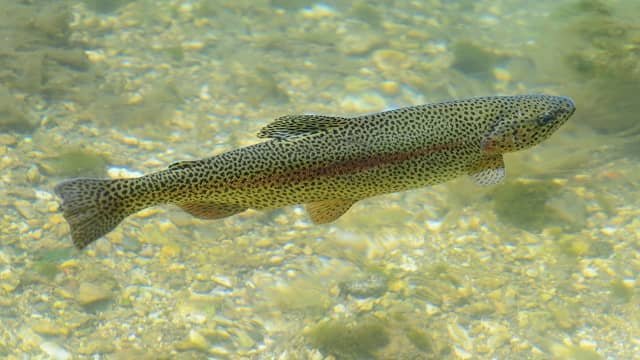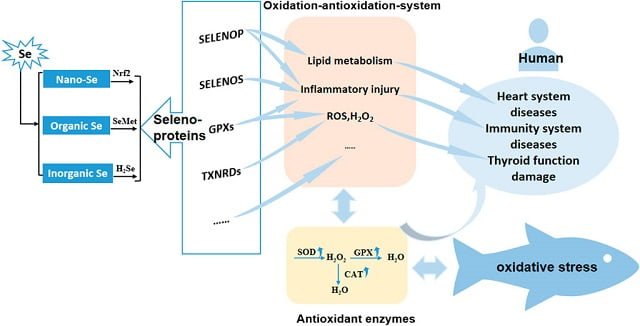In the quest to optimize the reproductive potential of red tilapia, a recent trial has explored the impact of dietary selenium forms on broodfish. This study, conducted by researchers from Zagazig University, Arish University, Port-Said University, and Suez Canal University, scrutinizes the influence of traditional selenium sources, selenium nanoparticles (NPSe), and a combination of both on the reproductive performance of red tilapia breeders.
Experimental Setup
The trial employed four distinct broodstock diets, each revealing a unique narrative about selenium’s role in reproductive health. A control diet, free of additives, served as the baseline, while the other three diets featured sodium selenite, selenium nanoparticles (1 mg/kg), or a combination of both. Twelve expansive cement ponds hosted experimental groups, with each pond accommodating six prespawning females and two males of red tilapia. Over a span of 25 weeks, the reproductive traits of 18 adult female fish were meticulously monitored.
Key Findings
Results from the study unveiled that females fed NPSe-enriched diets exhibited significantly higher weights in viscera, liver, and gonads compared to other experimental groups. The experiment reported a notable increase in the Viscera Somatic Index (VSI), Hepatosomatic Index (HSI), and Gonadosomatic Index (GSI) in red tilapia breeders fed diets supplemented with NPSe.
Hormonal analyses revealed elevated levels of LH, progesterone, and estradiol-17β, along with lower levels of FSH in fish fed the NPSe diet, surpassing even the combined Na2SeO3 + NPSe and Na2SeO3 diets.
The diameter, weight, and volume of eggs, along with the number and weight of larvae, witnessed a remarkable surge in red tilapia brooder fish fed various dietary selenium forms.
Improved Spawning Performance
The study illuminated a significant enhancement in spawning performance indicators, particularly the total spawned eggs per pond or fish and the initial spawning interval, in female red tilapia broodfish fed selenium-based diets compared to the control group. Notably, the spawning frequency of each female fish fed NPSe-supplemented diets, either alone or in combination with Na2SeO3, experienced a considerable boost.
Structural Development and Intensity
Microscopic analyses revealed that fish groups fed NPSe alone or mixed with Na2SeO3 showcased a well-developed stroma structure, abundant mature vitellogenic and postvitellogenic oocytes, and a remarkable intensity of mature spermatozoa in the testis.
Conclusion
The researchers concluded that selenium-supplemented diets can enhance the reproduction and spawning performance of red tilapia breeders. Specifically, NPSe in the diet resulted in larger gonad sizes, earlier spawning activity, shorter spawning intervals, a longer fertility period for breeders, higher overall biometric indices of eggs, elevated gonadotropic hormone activities, and no incidence of egg deformities. They recommend including NPSe (1 mg NPSe/kg) in red tilapia broodstock diets as a safe and efficient strategy to improve reproductive function and fry production.
Stay Always Informed
Join our communities to instantly receive the most important news, reports, and analysis from the aquaculture industry.
Contact
Mohammed A. E. Naiel
Department of Animal Production, Faculty of Agriculture
Zagazig University
Zagazig 44519, Egypt
Email: mohammednaiel.1984@gmail.com
Reference (open access)
Mohammed A. E. Naiel, El-Sayed H. Eissa, Yasmin M. Abd El-Aziz, Saadea Saadony, Heba E. Abd Elnabi, Salah El-Sayed Sakr, “The Assessment of Different Dietary Selenium Resources on Reproductive Performance, Spawning Indicators, and Larval Production of Red Tilapia (Oreochromis mossambicus × O. niloticus) Broodfish“, Aquaculture Nutrition, vol. 2023, Article ID 5596619, 11 pages, 2023. https://doi.org/10.1155/2023/5596619
Editor at the digital magazine AquaHoy. He holds a degree in Aquaculture Biology from the National University of Santa (UNS) and a Master’s degree in Science and Innovation Management from the Polytechnic University of Valencia, with postgraduate diplomas in Business Innovation and Innovation Management. He possesses extensive experience in the aquaculture and fisheries sector, having led the Fisheries Innovation Unit of the National Program for Innovation in Fisheries and Aquaculture (PNIPA). He has served as a senior consultant in technology watch, an innovation project formulator and advisor, and a lecturer at UNS. He is a member of the Peruvian College of Biologists and was recognized by the World Aquaculture Society (WAS) in 2016 for his contribution to aquaculture.




